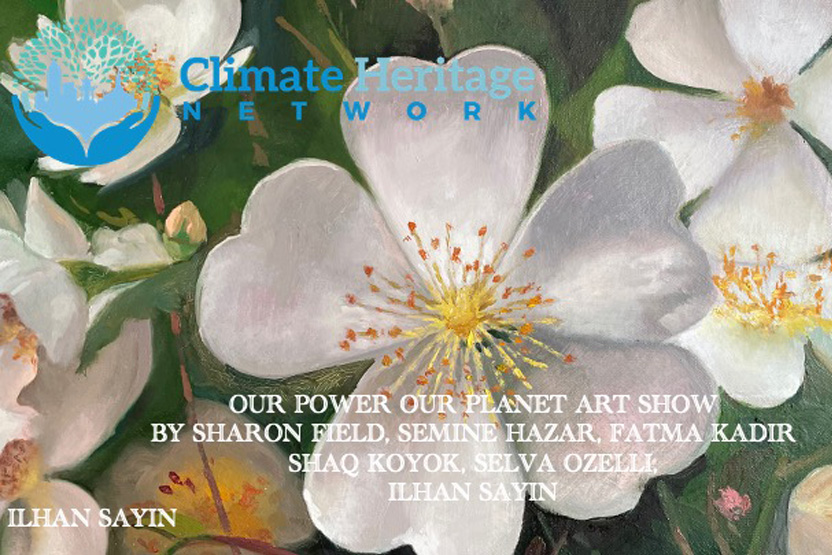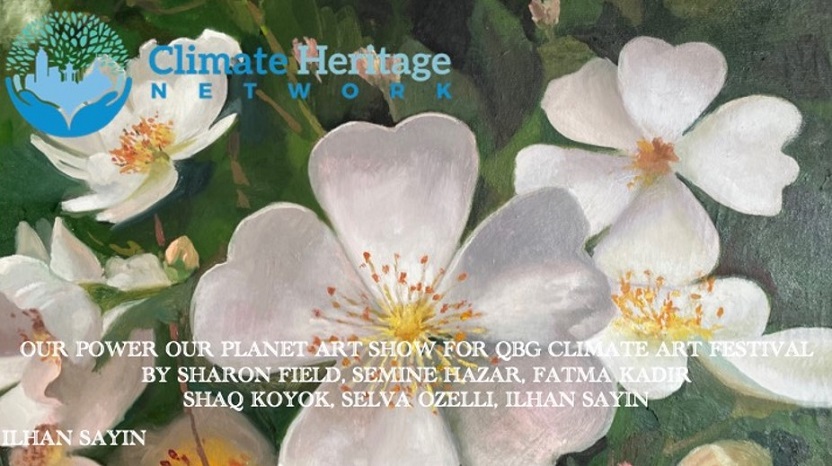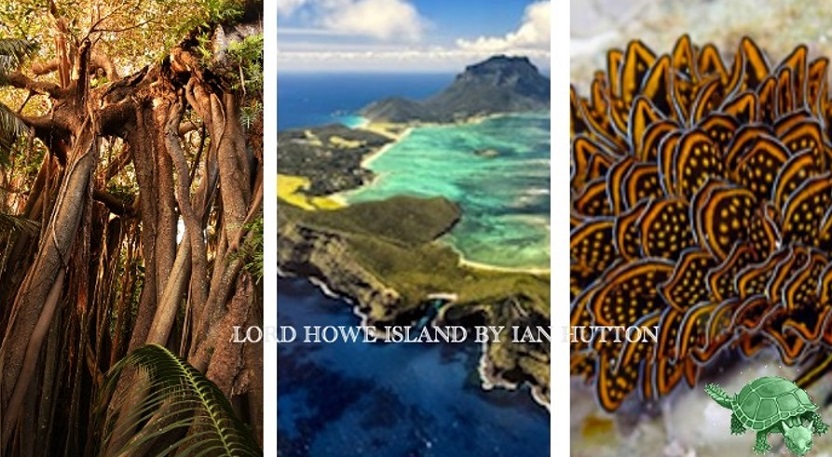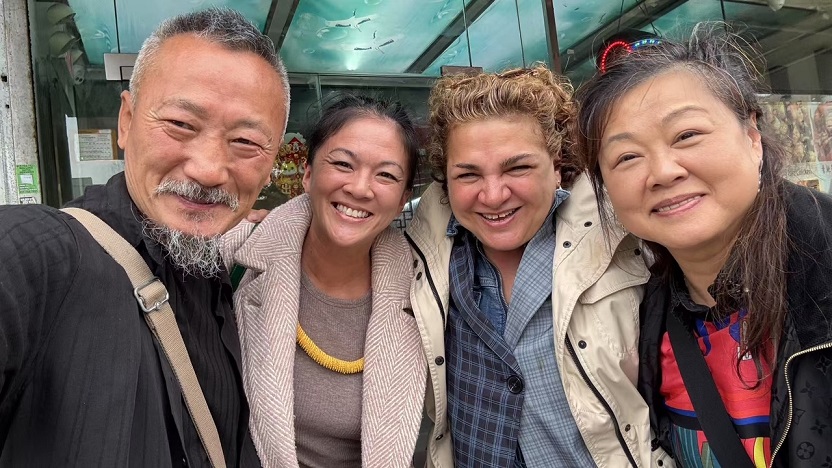04 May 2025

Mehmet Sinan Kuran
Artist
Five art shows at the QBG Climate Art Festival featuring the work of 21 artists from 6 countries bring world’s environmental issues to our attention.

The 55th anniversary of Earth Day has a theme of climate change “Our Power Our Planet” reminding people to make green energy – solar, wind, hydroelectric, geothermal, and tidal generated energy -- choices to support the tripling of renewable energy by 2030. “The annual Climate Arts Festival at Queens Botanical Garden (QBG) held since 2023 on Earth Month attracts 1500- 2000 people. On April 26th from 11 am – 4 pm QBG will feature many musical, interactive performances, tours, art videos/films, art work from around the world” explained Wei Du, Director of Public Programs at QBG. Because according to a review of 50 studies there is strong evidence that climate art influence’s public opinion and media coverage in an environmentally responsible way.1
As global temperatures continue to rise and the effects of climate change are increasingly felt across the world, there has been a corresponding surge in climate art activism over the past decade. Five art shows at the QBG Climate Art Festival featuring the work of 21 artists from 6 countries bring world’s environmental issues to our attention.
1. CUHK Jockey Club Museum of Climate Change "Art for a Sustainable Future" Art Show by 11 world renown artists from Hong Kong: Rolland Cheung, Chui Pui Chee, Michelle Fung, Fanson Lam, Cassandra Lau, Joe Li, Elsa Ngai, William Tong, Joe Wong, Margaret Yeung, Sophie Yu
The World’s first climate change museum CUHK Jockey Club Museum of Climate Change (MoCC) believes that art serves as a significant medium that has profoundly influenced human emotions and behaviors. Throughout history, numerous individuals have drawn inspiration from artists and their works, and this inspiration has often helped to transform societal norms and attitudes.
MoCC’s QBG Climate Art Festival exhibition showcases artworks by 11 artists from Hong Kong. These artworks explore the environmental challenges at the nexus of art and climate change. Each artwork is a heartfelt response to the beauty of the natural world and conveys the urgent and complex environmental challenges we face together. It invites us to reflect on our own actions and responsibilities in protecting our planet, and to recognize that we each have a role to play. By fostering a deeper understanding of the climate issues affecting us all, these works encourage us to join hands and collaboratively shape a sustainable future for ourselves and for generations to come.
2. Our Power Our Planet Art Show by Sharon Field (Australia), Semine Hazar (Turkiye), Fatma Kadir (Turkiye), Shaq Koyok (Malaysia), Selva Ozelli (USA), Ilhan Sayin (Turkiye)
Six award winning artists from four countries who regularly exhibit at Museums United Nations Conferences, Climate Week and Climate Festivals bring QBG’s Climate Art Festival an art show backed by Climate Heritage celebrating a healthy, sustainable, equitable, and prosperous future for us all.

Botanical oil painter Ilhan Sayin explained “The cover painting to our Earth Day art show is the forget-me-not flower from my Flower of Hope series. The forget me not flower is native to Europe and Asia, but is widely distributed elsewhere, including much of North America. The plant is usually found in damp or wet habitats, such as wetlands, bogs, ponds, streams, ditches, fen and rivers. Whilst it favors wet ground, it can survive submerged in water and often can form floating rafts. The flower’s resilience in surviving on land and submerged under water makes this flower a symbol of a promise to remember and cherish, of enduring love, fidelity, and devotion. Forget-me-nots have been used in various cultural ceremonies and traditions, often used in anniversaries, and memorials, further underscoring its universal symbolism of love, memory, and deep emotional ties. On the 55th anniversary of Earth Day, my hope is that we stay devoted to the theme of this day Our Power Our Planet by living gracefully in harmony with nature while making green energy choices.”
Because, last year was the hottest year on record, as a result the United Nations declared 2025 the year of glaciers. “I firsthand witnessed the melting of the ice and with a great sound crash into the sea. This brought tears to my eyes and inspired me to paint "The Lighthouse at the End of the World" after my trip to Argentina in 2017. This lighthouse featured in our earth day art show marks the last inhabitable point in South America. I imagined that soon we would be moving this light house to the Antarctic” said artist Semine Hazar.
“The melting glaciers caused Orcas to get stuck in drift ice, reefs experienced the seventh global bleaching event, with 74% of reefs showing high or very high levels of bleaching and forest fires burned uncontrollably in North and South America producing highest wildfire carbon emissions in the CAMS Global Fire Assimilation System (GFAS) dataset. I captured these environmental events of the hottest year on record in my paintings for our Earth Day art show” added artist Selva Ozelli.
Artist Shaq Koyok explained "Indeed too many forests were lost to wildfires last year. But deforestation, the intentional and widespread clearing of forests, is yet another environmental issue that is deeply intertwined with social, economic, and ethical considerations. As deforestation can destroy wildlife habitats, disrupt the Earth's climate system, harm local or Indigenous communities, and more. The 2024 Forest Declaration Assessment report found that the world was significantly off track to meet the goal of ending deforestation by 2030, with the level of deforestation in 2023 almost 50% higher than steady progress towards zero would require. Brazil is cutting down the Amazon rainforest "Selva" to build highway for the United Nations Climate Change Conference (COP30) which is counterintuitive and a such a pity."
“The impact of deforestation, habitat loss, pollution, wild fires marked the first documented mainland bird extinction in Europe, North Africa, and West Asia with the Slender-billed Curlew a rare migratory bird being declared extinct last year. I draw attention to this issue in my paintings for our Earth Day art show" added avian oil artist Fatma Kadir.
Botanical Artist Sharon Field whose purple poppy painting --a symbol of remembrance for the animal victims of climate change – is featured as the final painting of the Earth Day art show. This painting is from her 3000 Days and Counting Scroll series which she is drawing and painting a species directly onto to tell a story with a lasting visual impact. "I have been traveling overseas talking about the issues of climate change and biodiversity with a range of people in different places. Where were the scrolls viewed? The USA (New York, Pittsburgh and Boston), United Kingdom (London), France (Paris and Lyon), the Netherlands (Amsterdam) and Singapore. The audiences varied widely –the general public and botanical artists. So many people heard about the talks after the event, and there are invitations for return visits to many places … we will see! Over the two months of travel, I continued to complete a drawing a day on Scroll #4, and by 21 December the first 1000 drawings (and days) were marked." https://sharonfieldartist.com.au/2012-days-and-counting/
3. Bellow Below by Jo Lane (Australia) and Dr. Diana Chester (USA):
“Bellow Below is about the hidden life within an aquatic or marine garden in southern Australia, Western Port which is a Ramsar Wetland of international significance (1982) and also included in the Australia Migratory Bird Agreements with China, Japan and Republic of Korea (CAMBA, JAMBA and RoKAMBA respectively). It is one of only four Australian Biospheres under the global UNESCO World Network of Biosphere Reserves serving as the kidneys of Australia keeping life safe.
This video a joint collaboration between Dr. Diana Chester (a US citizen and current lecturer at Sydney University as well as sound artist) and I as the artist, is a groundbreaking way to portray a very valuable environment, by hearing the sounds recorded with sensitive hydrophones beneath the muds, mangroves, wetlands and sea shores of the waterway.
Despite all this, the area is CONSTANTLY considered and approached as an industrial development site! So far, huge activist demonstrations have saved it from a variety of proposed developments over the last 2 decades. It hangs on by the will of scientists, activists and some ministers - but the work is not over to save it” explained Artist Jo Lane https://jolane.com/ of her joint project backed by Climarte.
4. Lord Howe Island - Climate Change by Ian Hutton (Australia):
World renowned photographer, biologist Ian Hutton, who is the author of many scientific papers and books and the curator of the Lord Howe Island Museum, brings a taste of Lord Howe Island Group (LHIG) to the QBG’s Climate Festival with a message that even Paradise is not safe from the impact of global warming.
LHIG, an Australian island group in the Tasman Sea east of Port Macquarie, is one of the most beautiful islands in the Pacific and an iconic tourist destination. It was inscribed on the World Heritage Register in 1982 under the United Nations' World Heritage Convention in recognition of its superlative natural phenomena and its rich terrestrial and marine biodiversity as an outstanding example of an island ecosystem developed from submarine volcanic origin containing a unique biota of plants and animals, as well as the world’s most southerly true coral reef. It is an area of spectacular and scenic landscapes encapsulated within a small land area. It provides important breeding grounds for colonies of fish, seabirds as well as a significant natural habitat for the conservation of threatened species.

“The cloud forest at the tip of Lord Howe Island's highest peak is an otherworldly place alive with animals, birds, plants and flowers not found elsewhere on Earth. Mist hangs in the air, embracing the giant mosses and clusters of tree orchids that adorn the summit of the majestic Mount Gower on Lord Howe Island. Ascending into this rare island cloud forest is like stepping into a fairytale — a hushed and secret world, carpeted in a tapestry of rich greens, rare palms, and twisted trees veiled in lichens. The secret cloud forests of Lord Howe Island are an enchanting reward for those who have made the rugged and arduous climb to the island's highest peak. I thank Queens Botanical Garden for hosting my Lord Howe Island – Climate Change video where the public can see snippets of Lord Howe Island which is not safe from the impact of global warming ” explained Ian Hutton. And it's taken radical action to save it see more: https://www.abc.net.au/news/2024-11-2.
5. The Melting Age Alfons Rodriguez & Jose Bautista (Spain):
“The Melting Age” is a journey through over 30 countries on six continents, showing places and situations that demonstrate the causes and consequences of the climate crisis. What we might gain and, at the same time, what we could lose. Using photographs taken at the end of the 20th century and throughout the 21st, the aim is to narrate how humanity’s great challenge in the coming decades is being tackled and how the climate crisis has been with us for a long time. We should not be suddenly surprised now” explained award winning photographer and filmmaker Alfons Rodríguez about his multi award winning documentary with Jose Bautista supported by Teiduma and Climate Heritage Network.
What started as a one group video exhibition at Queens Botanical Garden's Climate Arts Festival in New York City has ballooned into an art show that will be broadcast across 3 countries, 8 cities, and 11 museums/cultural institutions as follows:
USA
New York
Maryland
China
Hong Kong
CUHK Jockey Club Museum of Climate Change, Hong Kong
Australia
Melbourne
Lord Howe Island

1. https://www.sciencedirect.com/science/article/abs/pii/S2352154625000178?via%3Dihub
Comment
Reply